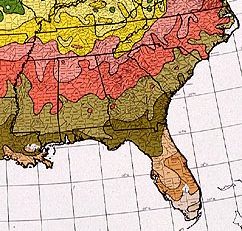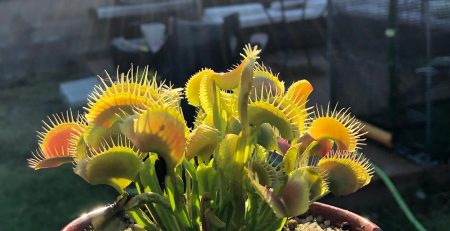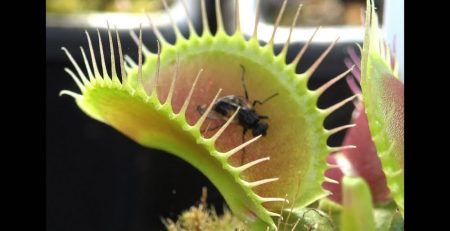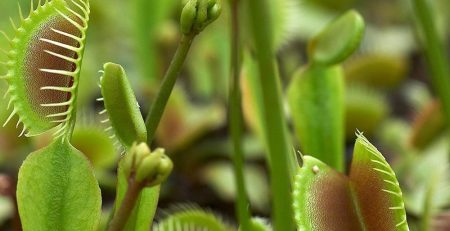The Venus Flytrap’s seasonal leaves
Venus flytraps tend to produce two types of leaves: spring-summer leaves and summer-autumn leaves. Before we describe the details, you need to know a little terminology. The trapping part of a leaf (the part that looks like a clam) is called the lamina or leaf-blade. The long leafy part that connects the lamina to the ground is called the leaf-base. (A third leaf part, the petiole, is the little post that connects the leaf base to the lamina. Some people mistakenly refer to the leaf-base as the leaf petiole, but you look smarter than one of those people.)
Most photographs of Venus flytraps show the summer-autumn leaves. These are characterized by wide, short leaf-bases that lie on the ground. The traps are usually brightly colored red. In contrast, the spring-summer leaves have long, narrow leaf-bases and the leaves are held up in the air. The traps are often less brightly colored.
In the spring, the first leaves to form will be, obviously, the spring-summer leaves (the long and skinny ones, remember?). Here is where it gets tricky. If you grow your plant with insufficient light (a very common mistake), it will produce skinny, sick and unhappy leaves which are pale and reach for the light (just like a fashion model), regardless of what time of the year it is.
How do you tell if your plant is making happy, thin, spring-summer leaves or unhappy, thin, light-starved leaves? You can tell by the strength of the leaves. Plants that are weak from light deprivation tend to have floppy leaves that droop to the soil surface—normal spring-summer leaves are sturdy and stiff.












Leave a Reply
You must be logged in to post a comment.